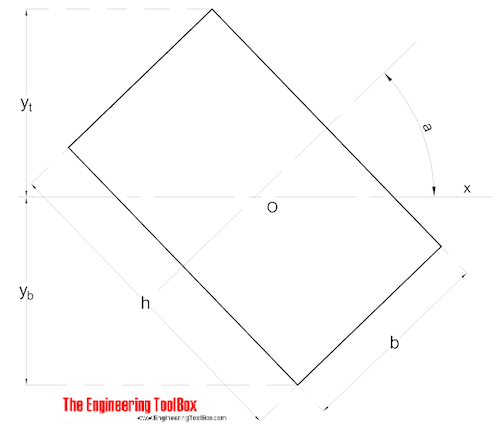Area Moment of Inertia with Definitions, Formulas & Calculator
Explore the area moment of inertia (second moment of area) with detailed formulas, calculation tools, and reference tables for common shapes. Essential for structural and mechanical engineering applications.
Area Moment of Inertia or Moment of Inertia for an Area - also known as Second Moment of Area - I, is a property of shape that is used to predict deflection, bending and stress in beams.
Area Moment of Inertia - Imperial units
- inches4
Area Moment of Inertia - Metric units
- mm4
- cm4
- m4
Converting between Units
- 1 cm4 = 10-8 m4 = 104 mm4
- 1 in4 = 4.16×105 mm4 = 41.6 cm4
Example - Convert between Area Moment of Inertia Units
9240 cm4 can be converted to mm4 by multiplying with 104
(9240 cm4) 104 = 9.24 107 mm4
Area Moment of Inertia (Moment of Inertia for an Area or Second Moment of Area)
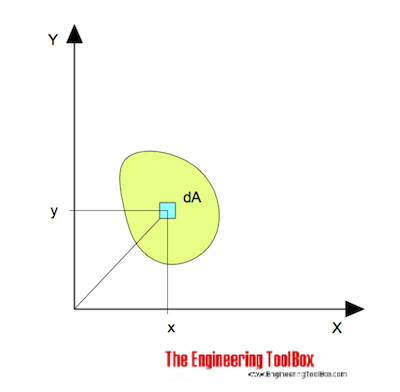
for bending around the x axis can be expressed as
Ix = ∫ y2 dA (1)
where
Ix = Area Moment of Inertia related to the x axis (m4, mm4, inches4)
y = the perpendicular distance from axis x to the element dA (m, mm, inches)
dA = an elemental area (m2, mm2, inches2)
The Moment of Inertia for bending around the y axis can be expressed as
Iy = ∫ x2 dA (2)
where
Iy = Area Moment of Inertia related to the y axis (m4, mm4, inches4)
x = the perpendicular distance from axis y to the element dA (m, mm, inches)
Area Moment of Inertia for typical Cross Sections I
Solid Square Cross Section
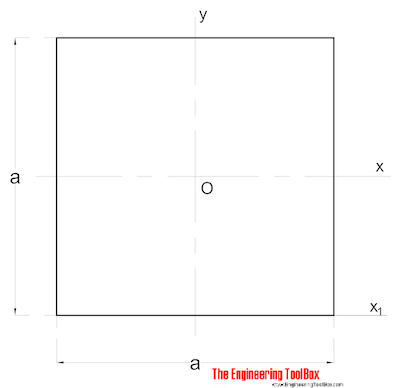
The Area Moment of Inertia for a solid square section can be calculated as
Ix = a4 / 12 (2)
where
a = side (mm, m, in..)
Iy = a4 / 12 (2b)
Solid Rectangular Cross Section
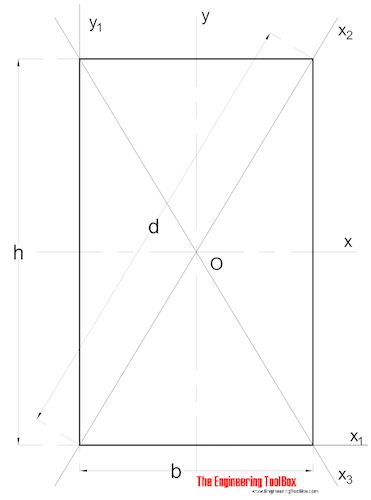
The Area Moment of Ineria for a rectangular section can be calculated as
Ix = b h3 / 12 (3)
where
b = width
h = height
Iy = b3 h / 12 (3b)
Solid Circular Cross Section
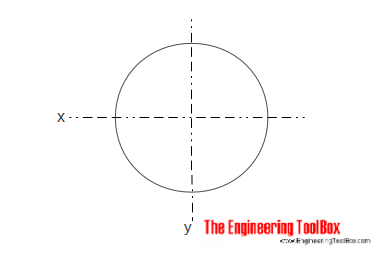
The Area Moment of Inertia for a solid cylindrical section can be calculated as
Ix = π r4 / 4
= π d4 / 64 (4)
where
r = radius
d = diameter
Iy = π r4 / 4
= π d4 / 64 (4b)
Hollow Cylindrical Cross Section
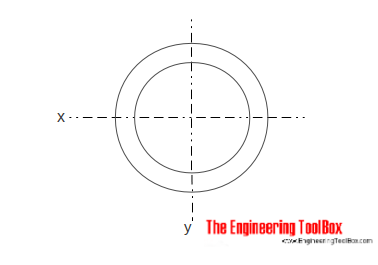
The Area Moment of Inertia for a hollow cylindrical section can be calculated as
Ix = π (do4 - di4) / 64 (5)
where
do = cylinder outside diameter
di = cylinder inside diameter
Iy = π (do4 - di4) / 64 (5b)
Square Section - Diagonal Moments
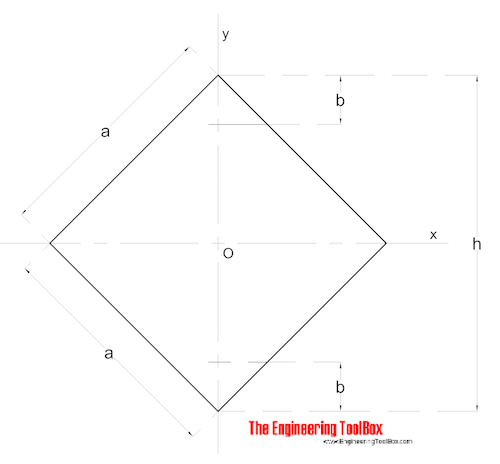
The diagonal Area Moments of Inertia for a square section can be calculated as
Ix = Iy = a4 / 12 (6)
Rectangular Section - Area Moments on any line through Center of Gravity
Rectangular section and Area of Moment on line through Center of Gravity can be calculated as
Ix = (b h / 12) (h2 cos2(a) + b2 sin2(a)) (7)
Symmetrical Shape
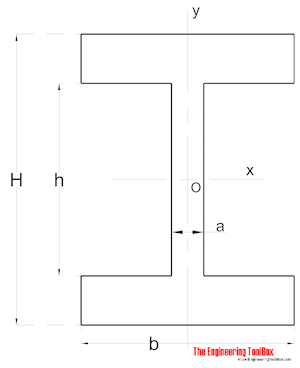
Area Moment of Inertia for a symmetrical shaped section can be calculated as
Ix = (a h3 / 12) + (b / 12) (H3 - h3) (8)
Iy = (a3 h / 12) + (b3 / 12) (H - h) (8b)
Nonsymmetrical Shape
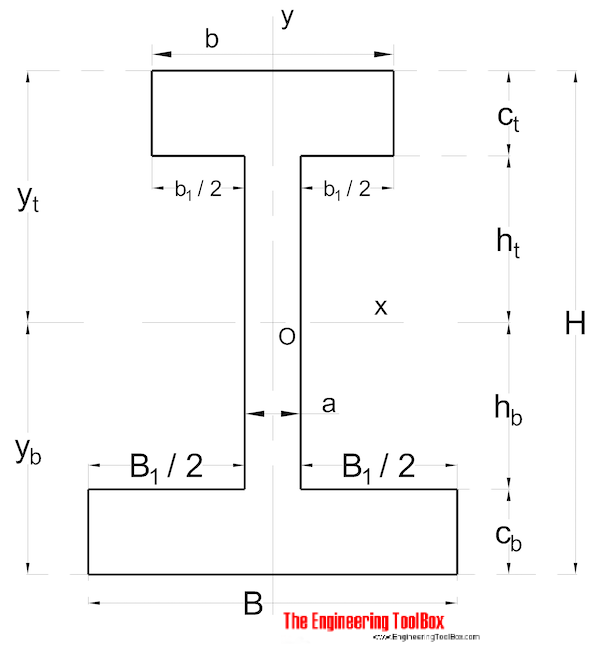
Area Moment of Inertia for a non symmetrical shaped section can be calculated as
Ix = 1/3 (B yb3 - B1 hb3 + b yt3 - b1 ht3) (9)
Area Moment of Inertia vs. Polar Moment of Inertia vs. Moment of Inertia
- "Area Moment of Inertia" is a property of shape that is used to predict deflection, bending and stress in beams
- "Polar Moment of Inertia" as a measure of a beam's ability to resist torsion - which is required to calculate the twist of a beam subjected to torque
- "Moment of Inertia" is a measure of an object's resistance to change in rotation direction.
Section Modulus
- the "Section Modulus" is defined as W = I / y, where I is Area Moment of Inertia and y is the distance from the neutral axis to any given fiber

